Leaderboard
Popular Content
Showing content with the highest reputation since 26/04/24 in all areas
-
Sheffield was noted for having many two storey back to backs (not attics). Here's a photo of my mum in 1936 outside her house on Jericho street. Note the bedroom windows open to get as much ventilation as possible, also shutters on the ground floor, and donkey stoned steps. In her new Whitsun outfit.1 point
-
Many people still confuse “back to back’s “with all terraced housing. A terrace of “back to back's “meant that an individual dwelling only had a frontage of its own. The rear was shared with its back street neighbour’s back wall and the end walls, either side ,were also shared. They lacked adequate ventilation had poor sanitation ……which encouraged the transmission of infectious diseases, and bugs in general. Gone and not missed…although one wonders with the current housing crisis if some bright spark might push for their reIntroduction?1 point
-
Without doubt it's Victoria Station looking out towards the station approach. My Dad was a porter-cum-lamp man there in the 1950's and 60's and I spent may hours of my childhood accompanying him to work where he regularly pushed me along the platforms on the back of a luggage trolley. He also allowed me to secure the lamps on the front and back of trains whilst they were parked at a platform, but I don't think @Elf n Safety' would be too happy with that. He also took on the station announcer's role advising travellers of incoming trains and the destination of outgoing trains. Once he'd done the announcing, and unknowingly to me, he used the microphone to contact Father Christmas's fairies to order a supply of goodies for me such as spangles, lucky bags, Fry's Five Boys chocolate bars and sherbet dips, but my wife thought I was stupid. (Only joking. I was only 6 or 7 at the time). Happy days! Eric Boocock1 point
-
1 point
-
1 point
-
1 point
-
Wessex Archaeology excavated the area in 2019 ( Hollis Croft Excavations ). They targeted the Orange Branch public house as "Area K". Their report included "In 1787–9 the Orange Branch was operated by John Harrison, perhaps as part of the truck system used to exploit workers at his steel works on the other side of the road. By 1853 the Orange Branch was at number 28 and was operated by Joseph Allen, joiner and victualler, and inhabited by his wife Sarah, three children and 20-year-old servant Alice Wardley." "Worker’s housing was directly excavated at the rear of the Orange Branch public house". A penny was found in the vicinity of the pub. "The cellars were well-preserved and a sequence of repair, redevelopment and blockage attested to alterations and use of the cellars over time" "Walls west of the cobbled yard were shown to be the upper parts of a series of cellars which had been maintained and rebuilt over time. In the 20th century a cart-way or entrance was installed in the east of the area, reducing the size of the former buildings, although the fabric of the earlier buildings was partially retained"1 point
-
1 point
-
Sorry for late reply, don’t know if you’ll see it but the farewell I mentioned (son of the Sheffield huntsman and footballer) in my tree was actually 1851-1908 and the next farewell I can recall or found would’ve been his nephew born 1909 son of Thomas David Sellars, although I think he was called Harold farewell. I do know there was a different sellars family at the same time of 155 Stannington Road with a son called Farewell if that helps, the ones I mentioned would be all walkley area.1 point
-
This seems to be a different furnace, though still on Smith Brothers' premises. from Sheffield Daily Telegraph 30th March 1915: ANCIENT FURNACE ON SITE OF SHEFFIELD CASTLE The Sheffield Corporation workmen engaged on the construction of the new road from the Great Central Station have unearthed on Sheffield Castle site the lower part of a steel furnace. It stands in what was formerly the yard of Messrs Smiths' Steel Works. The furnace is solidly built of rubble stone with a strong course of heavy gritstone, and is in shape a square truncated mound. The structure has four firing holes, and was built probably about the year 1800. It is not likely that its origin is earlier because the older engravings of the locality do not show the furnace. The building, however, is indicated in a sketch of Lady's Bridge which appears in Mr. Thomas Winder's work "T'Heft an Blades o' Shevvield" Incorporated in the masonry are slabs of the old stone from the castle. Among the ancient relics which the workmen have found have been an iron door crank, and a piece of glass from the castle windows, possibly 400 years old. These, along with portions of dressed stone and door moulds, are being taken care of by the Corporation. Later excavations may be carried out on what was the castle moat with the view of searching for objects of antiquarian interest. This photo appears in other places but with dubious dates attributed to it.1 point
-
Here's another photo of the furnace in context with the surrounding buildings ( Circa 1900 Castle Hill ) In 2016 Wessex Archaeology excavated part of the site ( 2016 Excavations ) Their Trench 1 which included part of the cone site found pieces of ‘crozzle’, (residue produced from furnace lining made from wheelswarf) and pieces of ganister, providing evidence to support the proximity of Trench 1 to a furnace. They stated that "No [documentary] evidence of steel production by R. & J. Smith could be found and it seemed likely that the furnace shown on Goad’s 1896 map was decommissioned and possibly later demolished during R. & J. Smith’s tenure of the site."1 point
-
1 point
-
A betting shop was proposed to open opposite us on Bellhouse Road in the 1950/60's and I remember someone coming to the house with a petition against it. Mum wasn't very pleased about it, thought it would attract "undesirables" Dad wasn't too concerned and sent them away with it unsigned. Found this, thought it might be of interest. Henry Steel (1832 - 1915), 'The Leviathian' s22479 Taken from Vanity Fair, 27th October, 1877. "Mr Steel is a native of Sheffield and a man of genius. He first displayed his powers in the pursuit of fishmongery, but being impelled to take up the national sport of horse-racing as a profession, he established himself as one of the benefactors to the backers of horses known as 'Bookmakers'. For some time he confined himself to making what we called 'silver books' , but before long he ran into a rein of gold and having received the 'stable commission' for St. Albans, he made a great coup and became a personage on the turf. Mr Peach married his sister, he married Mr Peach's sister and they all became partners in success. They are entrusted with most of the more important betting commissions and occupy so overpowering a position that they can command the market and influence the odds. The public personality of the partnership is found in Mr. Steel, whose face is known to every frequenter of race-courses, and whose transactions are so enormous as to have won for him the name of 'The Leviathian'. He is enormously rich-perhaps the richest man ever made by books. He is the proprietor of large steel and iron works at Sheffield, and not long ago he bought up the Archbishop of York's house in town, together with all its famous wines, as an appropraite residence for himself. He however, soon got tired of London society and retired again to Sheffield where he lives in opulent splendour. His account at the Westminster Bank is the largest there." Jehu Junior.1 point
-
My mother used to take my grandad's bets down to Popple St where a man used an entry to work from with a bookie's runner watching out for the police. I was only about 4 yr old but recall knowing we were doing something wrong.1 point
-
1 point























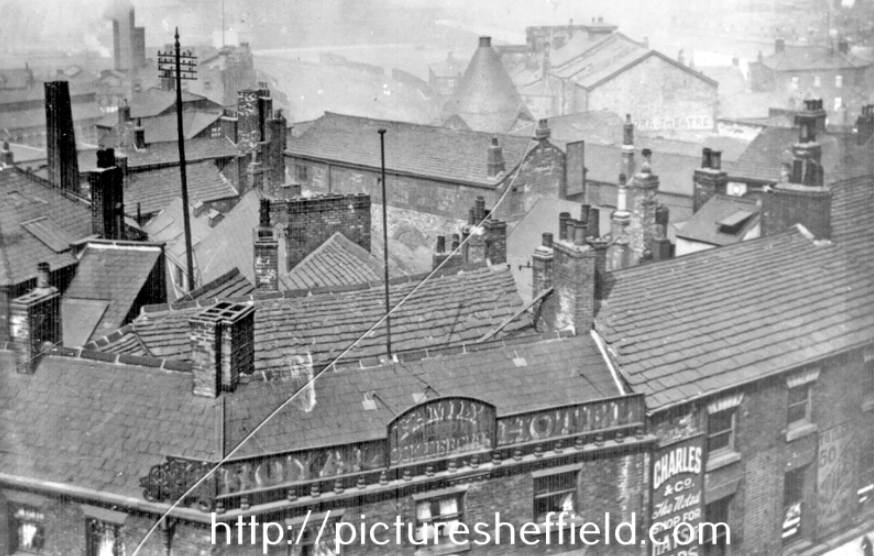
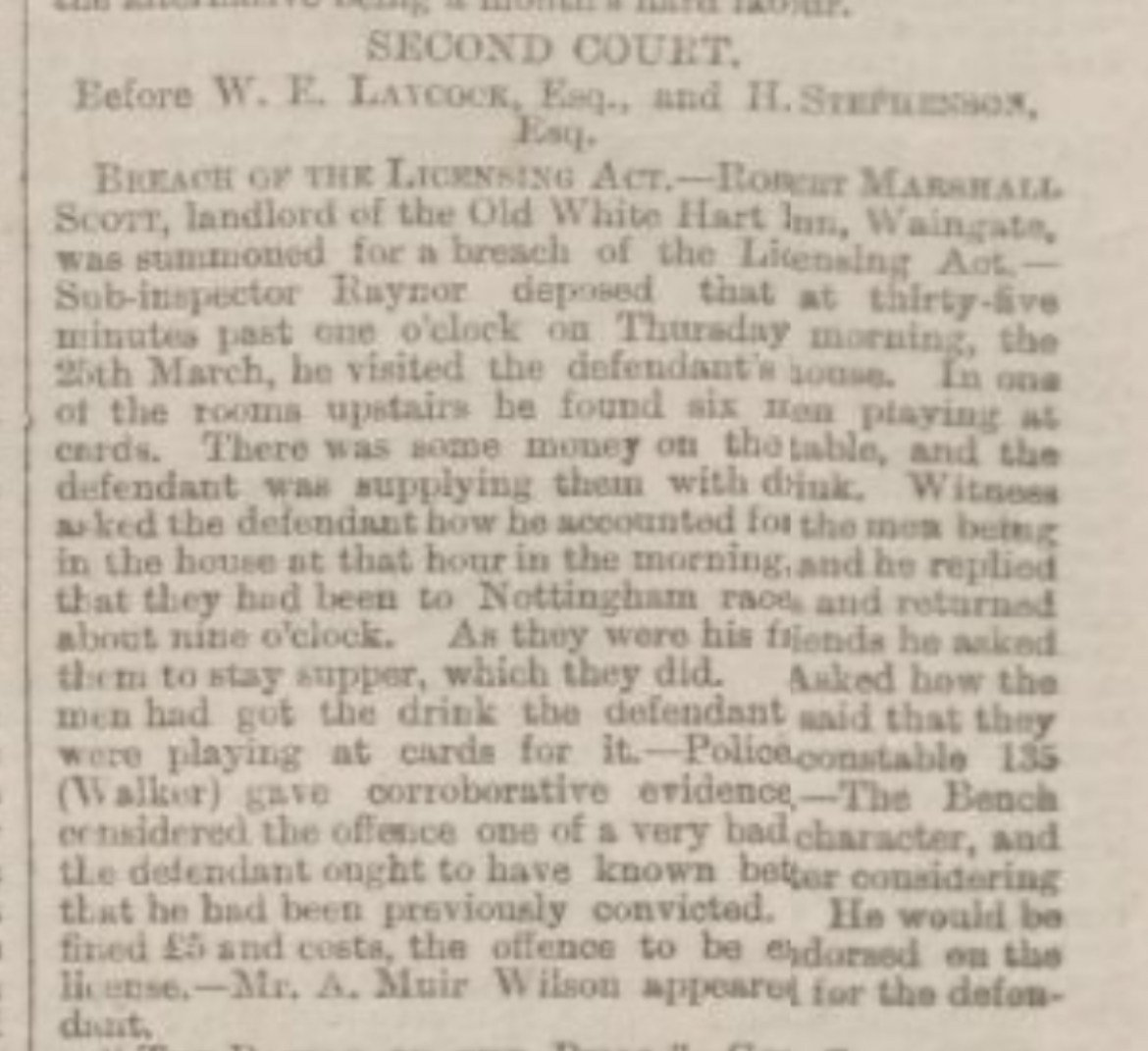

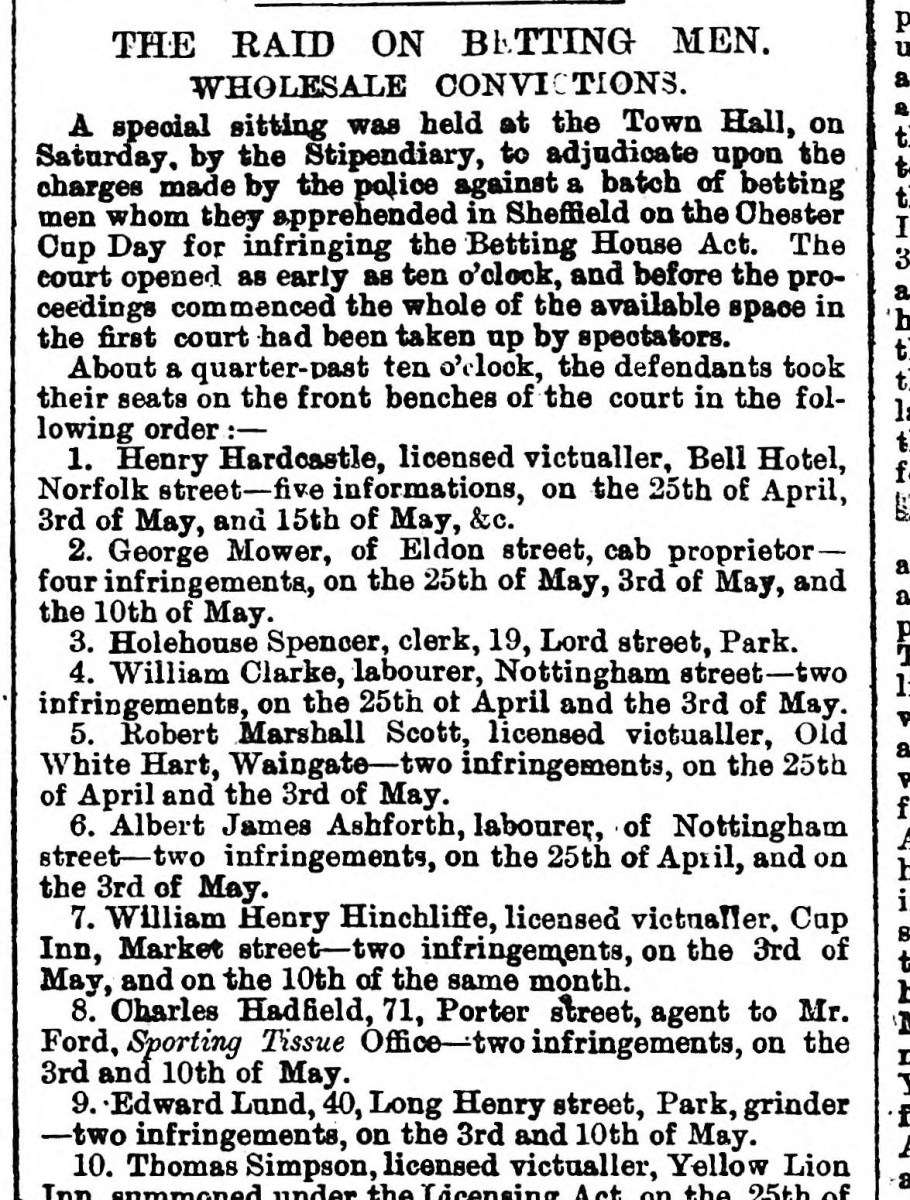
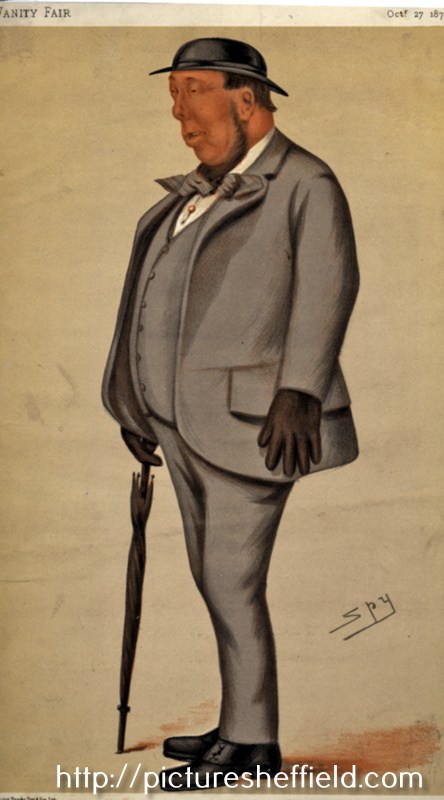
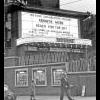
.jpg.ab9a747b42aaa43f4a8111d916ca0448.jpg)